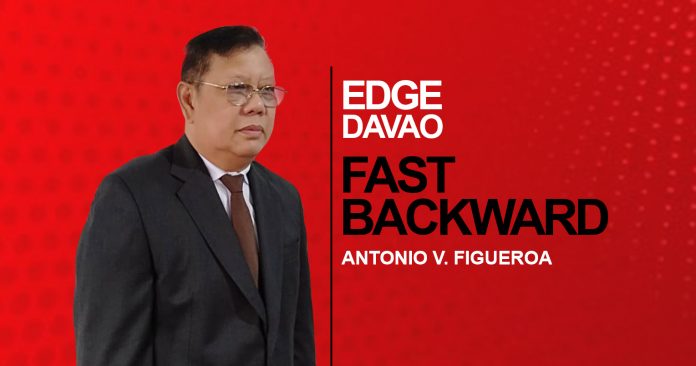Samuel Navarro, a half-breed Moro, does not quite ring a bell today but he is one of the few Davaoeños who figured prominently in the days after the departure of the Spanish authorities from Davao following the takeover of the archipelago by the Americans.
The Spaniards, including the clergy, left Davao on January 15, 1899. This incident led some people in the town of Davao to organize themselves and install an unpopular governing board. As a result, the civil guards launched an uprising and killed the claimant, his wife, and family. The assassination led to disorder and most of the population was in flight.
It took Navarro, a revered figure among the Moros and Visayans, to defuse the unrest by disarming the local government and ruling, even if arbitrarily, until the functions of government were capitulated to the American troops on December 14th, 1899.
In the December 1, 1900, elections, which were authorized under General Orders, 34, series of 1900, Navarro was elected as head (presidente) of the seventh barrio, and was sworn in on January 1, 1901, after his predecessor’s term expired.
The winners in the 1900 polls include Damaso Suazo, reelected almost unanimously as head of the town; Tomas Monteverde, as chieftain of the first barrio; Benito Saavedra, head of the second barrio; Feliciano Divino, as village leader of the third barrio; Justo Versoza, for fourth barrio; Domingo Fernandez, for fifth barrio; Angel Brioso, for sixth barrio (i.e., Santa Cruz, Davao del Sur); and Ciriaco de la Cruz, eighth barrio.
Arnold Henry Savage Landor, an English explorer, and anthropologist, in his book ‘The Gems of the East Sixteen Thousand Miles of Research Travel Among Wild and Tame Tribes of Enchanting Islands,’ (1904) wrote his impression about the man while on a stopover at his place:
“This man, Samuel Navarro, was an interesting personality, who reminded me strongly of Datto Piang, of the Rio Grande [in Cotabato]. He had a highly strung temperament, a quick eye, a courteous and dignified manner, and he offered me every possible assistance. He owns much land on this northwest coast of the gulf, and at Lassan [Lasang] he has 22,000 plants of hemp. He carries on quite a remunerative trade in dried fish, paying his laborers in fish and not money. He was general of the Mohammedan insurgents who fought the Filipinos in possession of Davao, and succeeded in capturing the place, subsequently handing it over to the Americans.”
Navarro’s leadership was on the good side. Fr. Tomas Barber, S. J., assigned in Davao town, also mentioned him in his August 18, 1916, trip to Lasang where Navarro had built a chapel to San Antonio de Padua. The padre’s party, accompanied by Carlos Cutler the sacristan, was welcomed by his family while he accompanied the visitors to the new chapel.
Fr. Barber noted that Navarro, though a Christian, was respected among the Moros including those from Sirawan who occasionally visited his place for advice.
The following day, a Saturday, the cleric wrote, the family of Navarro asked the priest to say a Requiem Mass for the village leader’s late wife:
“They themselves improvised a tomb that they covered with rich gold-embroidered crepes, and with the help of Amado Joven, former sacristan of Davao, we had nothing less than a sung Mass. The whole family and relatives were there. Later, all to the house of Don Samuel where the food was not scarce. [Navarro] took her [i.e., daughter] to the chapel at the time. From here I heard the sayao and moro-moro. Suffice it to say that there was such a large number of people at Don Samuel’s house.”
Though not honored by a landmark that bears his name, Don Samuel Navarro, as he is known in missionary chronicles, is one of the illustrious yet under-honored figures in Davao’s history.




